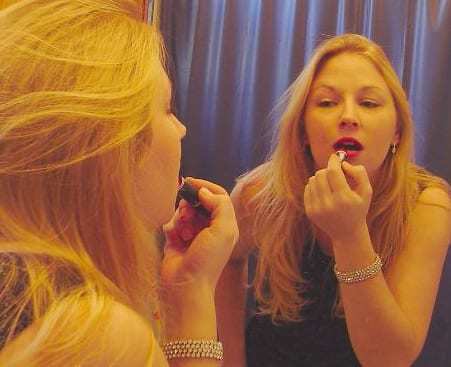The concept may seem dated but the experience of the latest technology is as fun as it ever was.
Panasonic took an old school idea right to the cutting edge at this year’s IFA tech show in Berlin, stepping away from the modern display to which we have become accustomed at these types of events, in favor of an augmented reality based view of how the not too distant future may appear as technology steps into more areas of the home.
The brand brought a vision of how futuristic homes could look well within the lifetimes of the visitors.
The installations rode a careful line between progressive and just plain sci-fi, but they certainly did keep the attention of the visitors who were highly entertained by what many of the various common household features could do. Entering the installation featured a kitchen, where a tablet could control cooking tasks, and where cooling trays allowed foods to remain fresh even while they were left outside of the fridge – for example, if they were in use as an ingredient. That said, among all of the features, it was the augmented reality that truly took the cake.
An augmented reality mirror took fashion – particularly makeup application – to a new high tech level.
 Those in the living room could relax and watch television video that appears to rise straight out of a sideboard, or lounge in front of artificial fire flames. The experience was fully interactive, meaning that through motion controlled sensors, the viewer could choose music to play, flip through a collection of photos, or even feed artificial fish. Also accessible was a review of all of the various devices throughout the home that were connected. This showed information such as which ones were charging and how much battery power they all had – regardless of whether or not they were charging at the time.
Those in the living room could relax and watch television video that appears to rise straight out of a sideboard, or lounge in front of artificial fire flames. The experience was fully interactive, meaning that through motion controlled sensors, the viewer could choose music to play, flip through a collection of photos, or even feed artificial fish. Also accessible was a review of all of the various devices throughout the home that were connected. This showed information such as which ones were charging and how much battery power they all had – regardless of whether or not they were charging at the time.
A Panasonic mirror, which used AR technology, was among the favorites of the visitors. It used camera based face tracking software to allow the user to be identified, to create an assessment, and to project a virtual image of the individual on a display to give the illusion of looking into a mirror. From there, the display provides a range of recommendations with regards to how makeup could be applied.
When a user has a favorite look, the augmented reality mirror saves it for future applications. Spots and wrinkles are identified and suggestions are made for correcting them. Different lighting conditions show how a look will appear in different environments. Though part of the home of the future installment, this technology was technically designed for commercial use.
